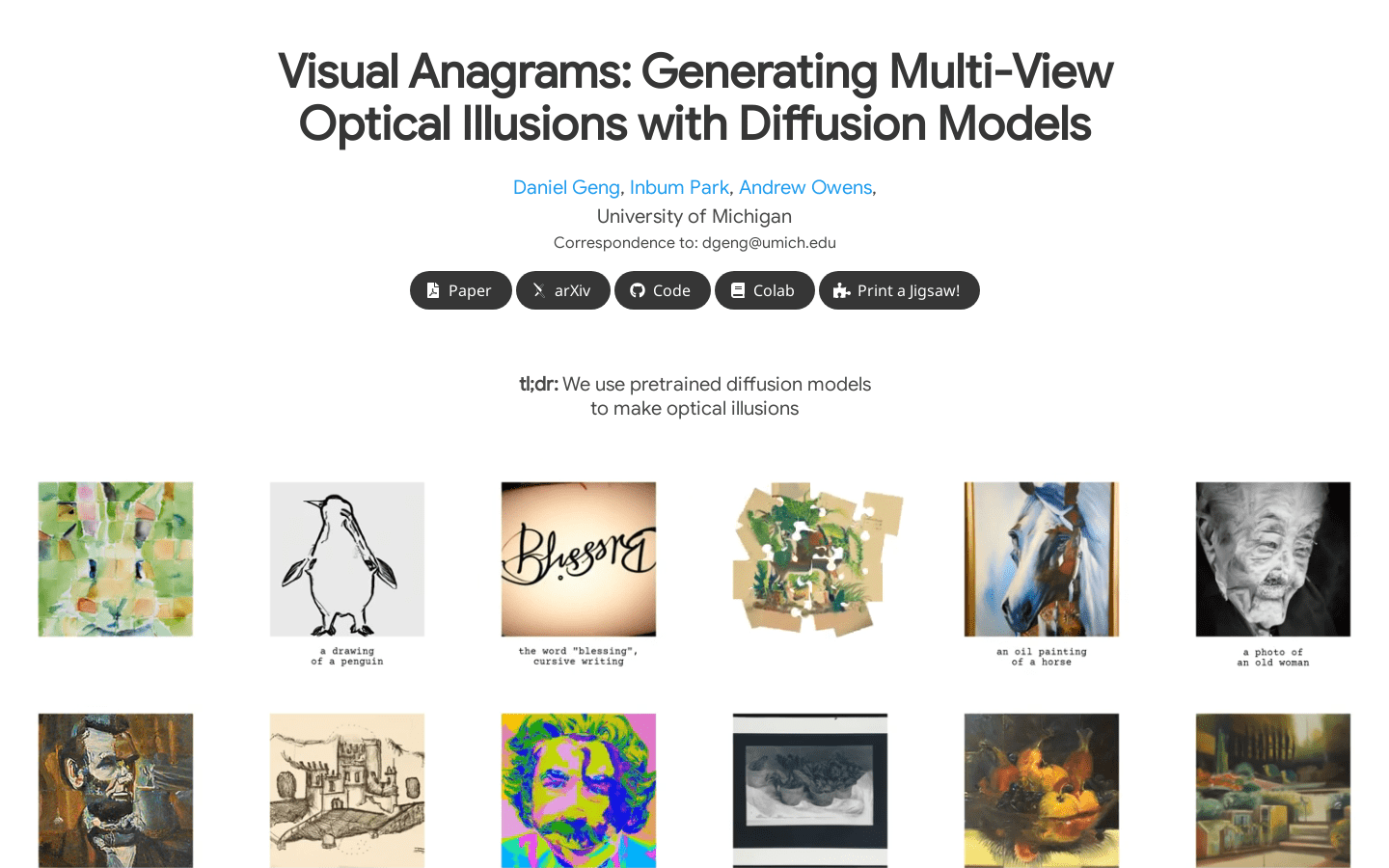










Visual Anagrams
Visual Anagrams:Visual Illusions via Diffusion Models.
Tags:AI image generationAI image editing AI image generation Diffusion model Open Source Standard Picks Transformation Visual IllusionOverview
Visual Anagrams is a novel approach designed to generate multi-view visual illusions with remarkable simplicity and efficiency. Unlike traditional methods, this technique operates in a zero-shot manner, meaning it can handle various transformations without requiring extensive training data for each specific task.
The core concept behind Visual Anagrams lies in its ability to leverage pre-trained diffusion models. By estimating the noise inherent in different views or transformations of an image, the method aligns and averages these estimates. This averaged noise is then utilized during the diffusion process to generate visually appealing and coherent illusions.
Our experiments demonstrate that this approach supports a wide array of transformations, including:
– Rotation
– Flipping
– Color inversion
– Tilting
– Puzzle rearrangement
– Random shuffling
These capabilities are supported both theoretically and practically, as evidenced by our comprehensive testing.
Target Users
The applications of Visual Anagrams extend to a diverse range of users, including:
– Visual artists: Creating unique multi-view illusions for digital art.
– Designers: Developing innovative patterns and textures for product design.
– Researchers: Studying perception and visual processing through controlled experiments.
– Entertainment industry professionals: Generating visually engaging content for games, films, and animations.
Features
1. Multi-view illusion generation: Create complex visual effects that appear differently from various angles or under different conditions.
2. Built-in transformation support: The system natively supports a variety of transformations, reducing the need for external tools or plugins.
3. Advanced noise estimation: Uses pre-trained diffusion models to accurately estimate and align noise across multiple image views or transformations.
4. Efficient diffusion process: Averaged noise estimates are used to guide the diffusion steps, resulting in high-quality outputs with minimal computational overhead.
This approach represents a significant advancement in generating multi-view visual illusions, offering both flexibility and efficiency for a wide range of applications.
























